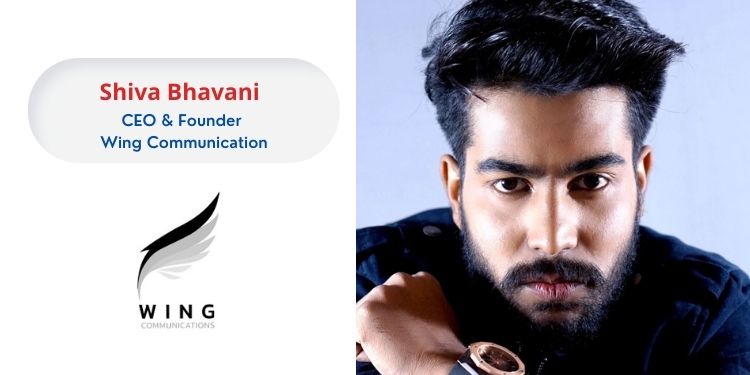With campaigns and advertisements promoting diversity and inclusion, advertising agencies have certainly taken a leap forward toward achieving more equality. In a country as diverse as India, it is highly necessary to inculcate diversity in every aspect. With a predominantly male culture, India has experienced a lot of gender inequality and downright misogyny. Recently, however, gender roles have been shifting in a positive way and advertising has been at the forefront of showing the changing roles of women. In terms of the power quotient of influencing people’s opinion, the advertising world holds a greater place and power of influence over framing the opinion of society.
In today’s world, people have started to get more cautious about issues around them and are urging brands to be woke too. There is still a lot of work to be done to drive meaningful, long-lasting change, despite the desire from industry leaders and organizations to support representation and inclusion. As social justice movements, such as Black Lives Matter, gain traction, advertisers have shifted their focus to diversity, highlighting the work still needed to improve equity, tolerance, and inclusion. Marketing and advertising have the power to influence a person’s beliefs and children & families are constantly exposed to their messages, hence, inculcating diversity and inclusion in marketing messages can have a significant positive impact on them.
In a modern and technologically advanced society, today’s youth looks out for much more than just details of the latest seasonal sale. Instead, they want to know if a brand supports diversity and inclusion both publicly and behind closed doors. This is a focus that is also becoming more important to brands. In the past two years, brands that featured the most diversity in their advertising performed 69 percent better than those that featured the least diversity.
The power of inclusion and diversity in advertising
Being inclusive in advertising isn’t only socially and morally right, it’s also good for a brand’s ROI. According to Global MONITOR, 65% of consumers say that it’s important that the companies they buy from actively promote diversity and inclusion in their own business or society as a whole. As a society, we’ve seen a massive shift around equality and representation in the last ten years. Specific movements have gained momentum around the rights of certain groups.
However, what does any of this have to do with advertising? All of it, it seems. The ability of advertising to shape society rather than reflect it is what makes it powerful. In addition to selling products and building brand equity, the very best creative can change behavior and shape society. It is true that some consumers believe advertising is responsible for creating and reinforcing negative stereotypes. Therefore, the industry has an important role to play in bringing about change.
When someone asks Alexa, “What is love?“ Alexa will share a response from one of the eight participants in the campaign. Every one of them describes a time when someone’s everyday act of love made them feel seen, heard, loved, and included. Ad Council and Amazon Ads did this to inspire audiences to take meaningful action toward creating a more inclusive world.
Inclusion in the advertising industry right now has become one of the topmost priorities in today’s world. Now more than ever the consumers are informed and are familiar with their available options. The increase in consumerism may be the most compelling reason for companies to showcase diversity in their advertising. In a study done by Google, it was found that people are more likely to consider or even purchase a product after seeing an advertisement that is diverse or inclusive.
In what ways do the agencies make their advertisements more inclusive?
– Knowing your audience: The key to knowing your audience is not just labeling them, but doing research on them! It is impossible to fully understand other people’s experiences, but by learning about other cultures and life experiences, you will be able to connect with them through your creativity. When your audience interacts with your content, you want them to feel like they can truly relate to it. It is especially crucial when advertising to an audience you don’t want to feel excluded from.
– Reviewing work with people with different perspectives: It is important to view your work from a variety of angles. By doing so, you will ensure that your advertising is accurate, relevant, and inclusive. When creating advertisements, be aware of your biases and use empathy. We all have something called implicit biases. You must first acknowledge your implicit bias in order to prevent it from affecting your work. Your implicit bias does not make you a bad person. There is an instinctual survival mechanism at play here, but we must overcome it.
– Educating ourselves: It is very important to keep up with the news, and not just from your own perspective. Think about every aspect, read personal stories, fact-check, and talk to others about what you have learned. An open mind is also crucial to creating inclusive advertising. No matter how different your life experience is from someone else’s, that doesn’t mean it isn’t a reality other people live. In advertising and marketing, this sense of empathy is crucial. Marketing to people requires putting yourself in their shoes in order to better relate to and engage them.
Inclusive and diverse advertisements work because they focus on experiences and pain points that buyers of the products can relate to regardless of their race, gender, age, and so on, but bring representation to new audiences. They answer the questions that linger in everyone’s mind and make underrepresented groups feel welcome and understood by the brands at the same time.
Article is authored by Shiva Bhavani, CEO & Founder of Wing Communication.
















